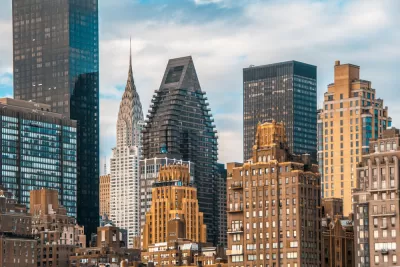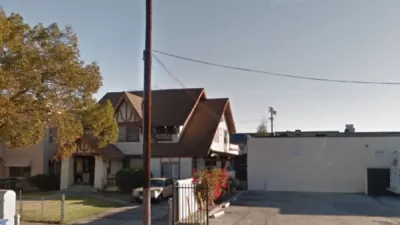Some New York City developers are building low-density luxury high-rises that, in some cases, have fewer units than the buildings they replaced.

High-rises are often touted as a solution for the housing crisis, as they can replace low-density housing with potentially hundreds of new units. However, a trend emerging in Manhattan shows developers doing the opposite. Writing in the New York Times, Stefanos Chen describes how some developers are building high-rise towers with fewer units than the buildings they replaced.
“Urban planners say the developers are squandering the precious few sites left in Manhattan’s high-density neighborhoods, where substantially more units could be built,” Chen writes.
Chen points to several projects that are well below their allowable number of units, opting instead for fewer, larger, and more expensive apartments. “Such projects have a cumulative effect. From 2010 to 2020, the Upper East Side lost more housing units than any other community district in the city, primarily through the combination of smaller apartments and demolitions, according to the Department of City Planning.”
Housing advocates say the city and state should do more to bar this type of development and require builders to include affordable housing, such as renewing an incentive program that expired in June or eliminating density limits and mandating below-market units.
FULL STORY: Taller Towers, Fewer Homes

Planetizen Federal Action Tracker
A weekly monitor of how Trump’s orders and actions are impacting planners and planning in America.

Restaurant Patios Were a Pandemic Win — Why Were They so Hard to Keep?
Social distancing requirements and changes in travel patterns prompted cities to pilot new uses for street and sidewalk space. Then it got complicated.

Map: Where Senate Republicans Want to Sell Your Public Lands
For public land advocates, the Senate Republicans’ proposal to sell millions of acres of public land in the West is “the biggest fight of their careers.”

Maui's Vacation Rental Debate Turns Ugly
Verbal attacks, misinformation campaigns and fistfights plague a high-stakes debate to convert thousands of vacation rentals into long-term housing.

San Francisco Suspends Traffic Calming Amidst Record Deaths
Citing “a challenging fiscal landscape,” the city will cease the program on the heels of 42 traffic deaths, including 24 pedestrians.

California Homeless Arrests, Citations Spike After Ruling
An investigation reveals that anti-homeless actions increased up to 500% after Grants Pass v. Johnson — even in cities claiming no policy change.
Urban Design for Planners 1: Software Tools
This six-course series explores essential urban design concepts using open source software and equips planners with the tools they need to participate fully in the urban design process.
Planning for Universal Design
Learn the tools for implementing Universal Design in planning regulations.
Heyer Gruel & Associates PA
JM Goldson LLC
Custer County Colorado
City of Camden Redevelopment Agency
City of Astoria
Transportation Research & Education Center (TREC) at Portland State University
Camden Redevelopment Agency
City of Claremont
Municipality of Princeton (NJ)





























